I may have (just) missed the 2015 International Year of Soils, so please forgive me for jumping on the soils bandwagon somewhat belatedly. Before I go further, a disclaimer—I am no expert on soils, having only relatively recently begun working on a multidisciplinary research project on carbon capture in urban soils, so what follows is an ecologist’s slant on how soils can be designed (or even engineered) to provide multiple ecosystem services in cities. One route by which this can be achieved is the widespread creation of Carbon Capture Gardens, and in this essay I will explore some of the science behind this idea and other ways of managing urban soils to benefit people and the planet.
I focus mainly on soils in urban brownfield land—a term that is used to describe previously developed land in a vacant or derelict condition. Data on the prevalence of urban brownfield land is often rather scarce, but an article by Peleg Kremer and colleagues (here at TNOC) showed that vacant land (which includes non-brownfield land) typically makes up between 12.5 and 25 percent of U.S. cities. Brownfield land is particularly common in the ‘shrinking cities’ of the U.S. and Europe, where human depopulation in recent decades has led to serious challenges for city planners and urban governance. However, the contribution of brownfield land to urban green infrastructure, and human societal needs more broadly, is increasingly acknowledged.
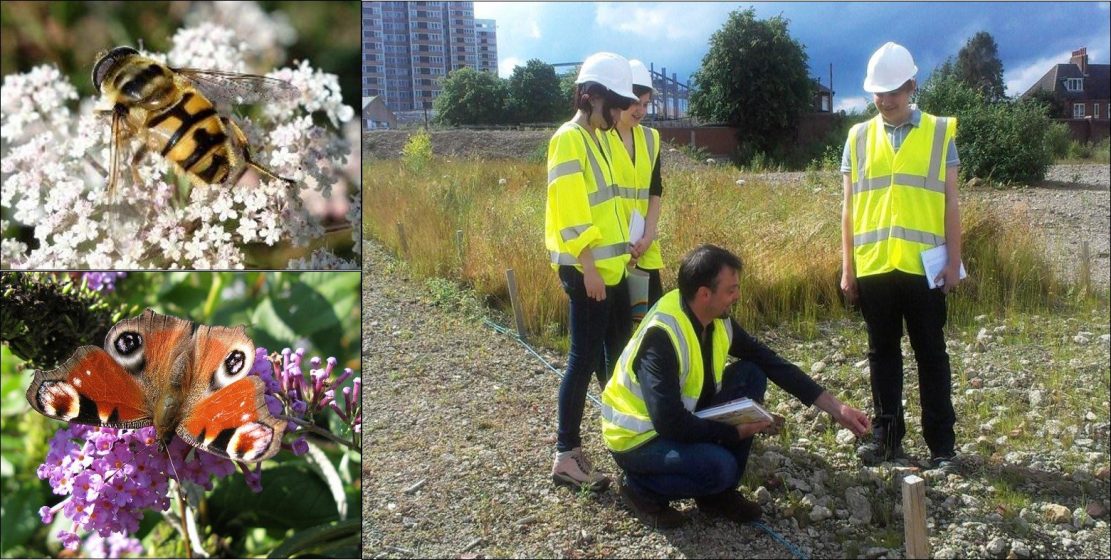
Take Leipzig, for instance. Dagmar Haase and colleagues use the German city as a case study to propose a ‘nexus between urban shrinkage and the provision of ecosystem services,’ whilst Rebecca Salminen Witt has eloquently described the opportunities for reconnecting people with nature in the once neglected open spaces of Detroit. Equally, vacant land in cities can also have a role more fundamental to human well-being, such as the provision of shelter for the homeless. Even in economically prosperous cities, there is a constant turnover of brownfield sites as buildings are demolished and new developments appear in their wake. Often hidden behind tall fences, brownfields are a considerable opportunity for the provision of biodiversity and ecosystem services in cities, but they are very rarely managed strategically at a city scale for this purpose.
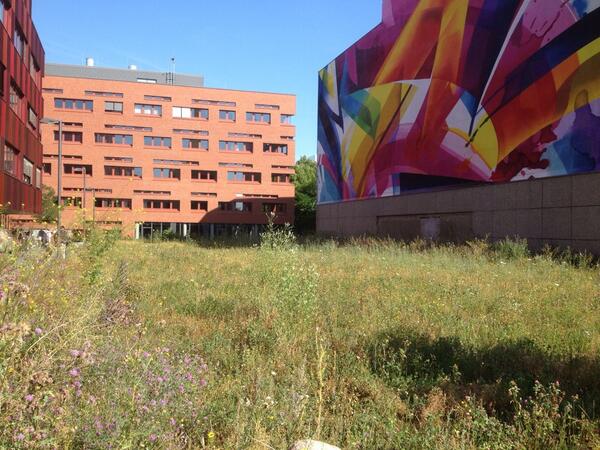
Soil carbon capture
To return to soils, it is widely known (even to non-soil scientists) that soils are a major carbon reservoir, storing almost 80 percent of the carbon found in terrestrial ecosystems (around 2500 of 3170 gigatons). Accordingly, increasing attention is being paid to the crucial role that soils have in mitigating climate change through carbon sequestration. The majority of soil carbon occurs in organic matter (known as soil organic carbon, SOC) and, therefore, soil carbon management tends to focus on maintaining and enhancing SOC. However, soil carbon can also be present inorganically as soil inorganic carbon, called SIC. SIC formation, which occurs naturally in arid soils, involves the combination of CO2 with soil minerals (typically magnesium and calcium) to form carbonates in a process known as mineral carbonation. These carbonates are a stable and long-term store for carbon, but their role in climate change mitigation has been underappreciated. Indeed, the recent FAO report on the Status of the World’s Soil Resources is rather dismissive of SIC, stating: “in most cases changes in inorganic C stocks are slow and not amenable to traditional soil management practices. Hence inorganic carbon does not play a significant role in terms of management of ecosystem services”.
But perhaps they are wrong. Recent research by Carla Washbourne and others at Newcastle University suggests that the FAO may have been too hasty to disregard a role for SIC. Soil carbonate formation was measured over an 18-month period at Science Central, a large brownfield site in the heart of Newcastle-upon-Tyne, U.K. The result was striking: urban soils have a huge capacity to capture atmospheric CO2 and store it inorganically as calcium carbonate (calcite). Calcium availability is the key limiting factor, and this is provided abundantly in brownfield soils that contain demolition wastes such as concrete dust and lime. The carbon capture process is extremely rapid: a hectare of urban soil can sequester up to 85 tonnes of atmospheric CO2 per year. Scaling this up, appropriate management of <12,000 ha of urban land to maximise calcite formation could potentially remove 1 million tonnes of CO2 from the atmosphere annually. To put that another way, the U.K. has 1.7 million ha of urban land and proactive management of 700,000 ha for mineral carbonation has the potential to meet 10 percent of the U.K.’s annual CO2 reduction target. But, what does ‘appropriate’ and ‘proactive’ management for carbonation in urban soils entail? How do we maximise rates of inorganic carbon capture in urban soils and are there important synergies or trade-offs with other urban ecosystem services?
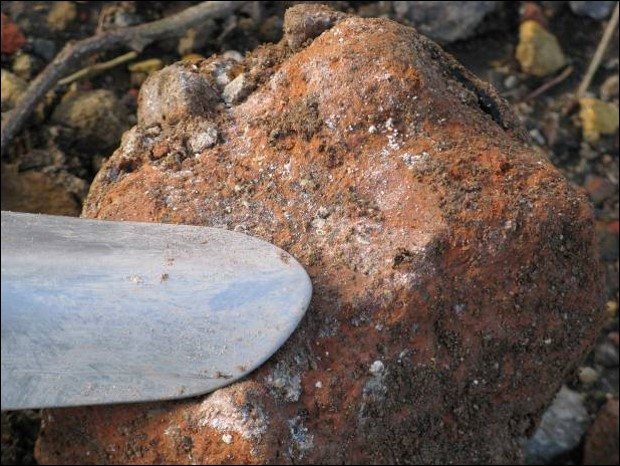
SUCCESS—a multidisciplinary research project
To answer these questions, and others, colleagues and I began a novel new research project at the end of 2014: Sustainable Urban Carbon Capture: Engineering Soils for Climate Change (SUCCESS—an acronym that leaves no margin for failure). SUCCESS seeks new ways of designing a carbon capture function into engineered soils, including during the development of urban brownfield sites, green space around transport infrastructure, or in land remediation and restoration. The multidisciplinary team includes academics (soil scientists, a geotechnical engineer, an ecologist, and a sustainability scientist) and project partners from the public and private sectors who will assist with the wider application of our results. The project integrates controlled experiments and field surveys to explore the capacity for urban land designed to capture carbon to also provide other ecosystem services, such as biodiversity conservation, recreation, and flood mitigation.
From a geotechnical perspective, the formation of calcium carbonate could have a couple of conflicting effects on soil properties. On the one hand, we might see increased soil strength—a property that will be beneficial to engineers—but, at the same time, we may see decreased permeability as pore spaces in the soil are filled by calcium carbonate particles. This could result in a devastating trade-off between carbon capture and urban flood mitigation, particularly pertinent given the record levels of rainfall across the U.K. this winter.
Designing artificial urban soils
One way of exploiting the natural carbon capture potential of urban soils is to design artificial soils that are engineered to maximise the rate of calcium carbonate formation. To evaluate the best materials, and ways of mixing them, a series of experimental plots have been constructed at Newcastle University. This experiment makes use of two main carbon capture materials. We are familiar with the first—crushed concrete, a waste product from local demolition activities that mimics the substrates found on brownfield sites. The second material may be less familiar, as I haven’t yet mentioned that naturally occurring calcium silicate rocks can also provide a source of calcium for mineral carbonation. One such rock is dolerite (also known as diabase), a rock that occurs all over the world and is quarried in the northeast of England. So, the second carbon capture material used in the SUCCESS experiments is crushed dolerite fines. The advantage of using dolerite compared to concrete is that we can create a net carbon benefit—a great deal of CO2 is emitted in the manufacture of concrete, whilst dolerite fines are a byproduct of local quarrying activities. The experimental plots are now being monitored regularly to assess the rate of calcium carbonate formation as well as the geotechnical properties (e.g., strength, permeability) of the artificial soil.
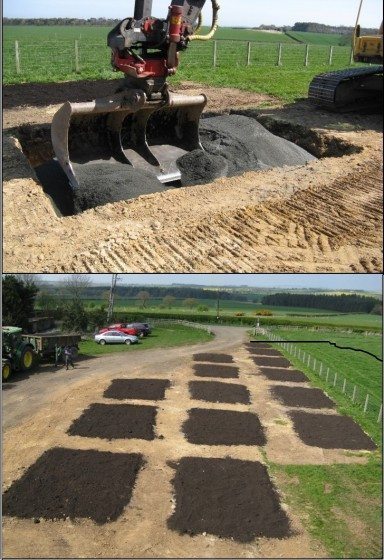
Will plants grow on harsh soils engineered for carbon capture?
Designing an artificial soil for carbon capture is all well and good, but will plants be able to grow on it? Crushed concrete and dolerite fines are very low in nutrients and we need to know which plants are best at surviving in these harsh conditions. Of those plants that can survive, we are also interested in the ability of different types of plants to boost the carbon storage capability of the soil. For example, we may expect that woody species with deep roots will be the most effective at drawing CO2 into the soil, making it available for calcium carbonate formation.
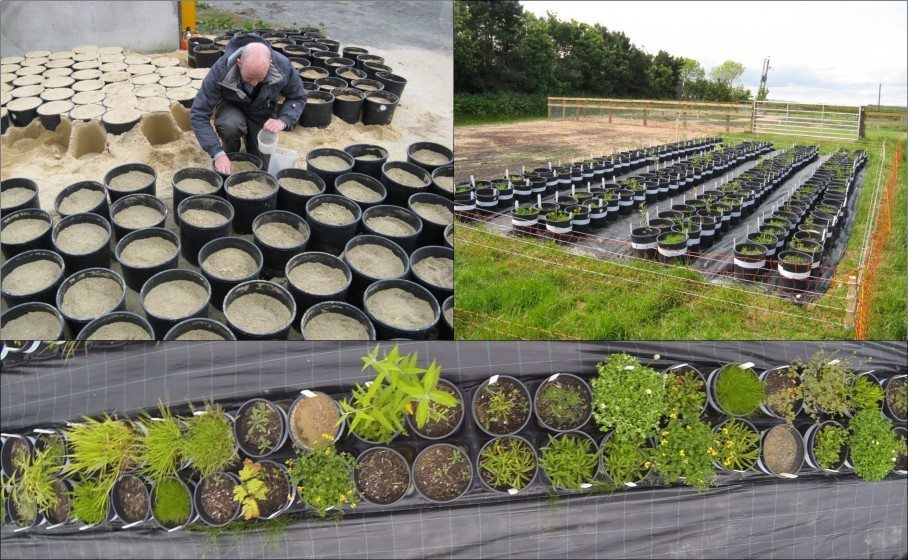
We established a plant growth experiment in spring 2015 to examine: (i) which plant traits confer tolerance to harsh soils engineered for carbon capture; and (ii) which plant traits deliver a high carbon capture potential. Over 200 pots have been planted up with 25 different plant species that span a range of functional types, including grasses, trees, and herbaceous plants, as well as some species that are grown as energy crops.
The experiment will run for 18 months and ‘soil’ samples will be collected to examine the amount of carbon that has been captured in the different experimental treatments. At the end of the experiment, we will also look at the total growth of the plants in each pot as a measure of their performance over the course of the experiment. In addition to the controlled experimental work, field surveys across a variety of brownfield sites in Tyneside are exploring what explains variation in carbon capture within and between brownfield sites by combining soil sampling with vegetation surveys.
Multifunctional urban green spaces
Carbonation is one of a number of ecosystem services that can be included in the multifunctional design of urban soils. Delivering such multifunctionality is likely to result in conflicts between the best approaches for managing for different goods and services. To deal with these conflicts, it is important to be able to identify synergies or trade-offs between different ecosystem services, and a key part of SUCCESS is to explore how carbon capture co-varies with plant diversity and other ecosystem services, such as flood mitigation, pollination, and cultural services.
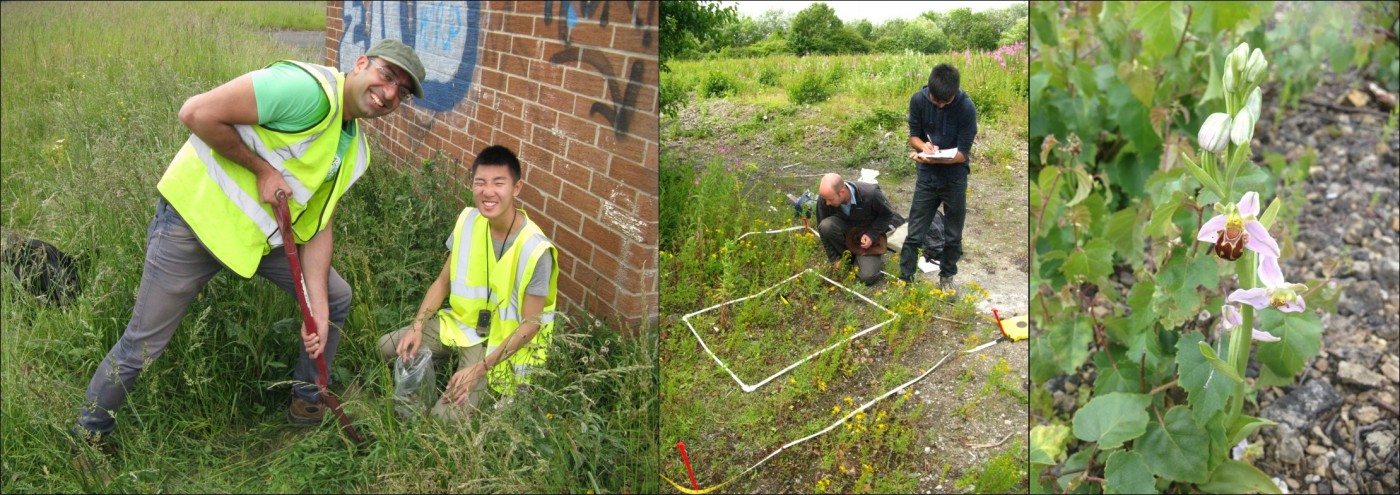
Quantifying ecosystem multifunctionality is difficult, and there have been relatively few attempts to do so in urban ecosystems. A notable exception is a recent study by Alison Holt and colleagues that identifies hotspots of urban ecosystem service provision across Sheffield, U.K. A key finding of this work is that these hotspots only appear at certain spatial scales, illustrating that optimising ecosystem service provision in cities requires holistic urban planning at the city level. This urban planning must also involve the strategic decision about whether to build on brownfield or greenfield (previously undeveloped) land. Building on urban brownfields is attractive, reducing urban sprawl as we strive to develop compact cities. Indeed, a recent study concluded that land sparing is crucial for the provision of urban ecosystem services. However, as Iain Stott and his co-authors acknowledge, ‘land sharing’—that is, the provision of accessible green space throughout a city—is also important if people are going to benefit from the ecosystem services and biodiversity on their doorsteps.
Whilst biodiversity in cities needs space, it also needs time. Beyond considering spatial dynamics, planning for urban biodiversity conservation also requires a temporal perspective. One of the reasons why urban brownfields are so important for biodiversity is that their constant creation and turnover provides a mosaic of sites at various stages of ecological succession at the city scale. Mira Kattwinkel and colleagues call for integrating the concept of ‘temporary conservation’ into urban planning, and their simulation model found that setting aside brownfields for 15 years before redevelopment maximised their conservation value. It would be very interesting to know how this period of time correlates with the provision of other ecosystem services—it may well be, for instance, that the formation of calcium carbonate in urban soils will saturate within such a time frame, but the necessary longitudinal data are lacking.
Of course, some urban brownfield sites have such a high nature conservation value that they warrant long-term protection. We don’t have many early successional habitats left in the U.K., and since 2007, ‘Open Mosaic Habitats on Previously Developed Land’ have been a priority habitat in the UK Biodiversity Action Plan (BAP). Despite this recognition, there remain few instances of biodiversity taking precedence over development when it comes to building on a prime brownfield site. The U.K. government has recently announced that they are relaxing planning permission restrictions for development on brownfields, with the exception of sites of ‘high environmental value,’ but they offer no definition of high environmental value, which potentially leaves important sites at risk from the vagaries of the planning system. The conservation value of brownfield sites is further complicated by the abundance of exotic plants that combine with natives to form ‘novel urban ecosystems.’ Exotic plants tend to polarise opinion, but most urban ecologists agree that insisting on native purity isn’t a viable option in urban landscapes. I’m sure that the pollinating insects visiting Buddleia davidii, an invasive exotic that thrives in British brownfields, would tend to agree. Equally, the novel substrates can support striking native species, such as bee orchids in Gateshead, England, that relish the chalk grassland analogue provided by brownfield land.
The provision of cultural ecosystem services in cities is arguably even more complex. For one, it is hard to manage the delivery of cultural services at the city scale in a dispassionate way, as people have significant connections with their local green spaces that can be lost forever if these sites are developed. Whilst plants or grasshoppers or pollinators can be maximised at the city scale through spatial and temporal urban planning, people aren’t quite so dispensable. For instance, a fascinating study of the ecology and community management of two post-mining sites in Yorkshire, U.K., clearly demonstrates that all brownfields have a story—a history—and this history still resonates in both current biodiversity and the provision of cultural ecosystem services. Many of these cultural services are inherently difficult to measure, or even intangible, such as sense of place or aesthetic appreciation of nature. Another challenge is that people’s preferences for cultural services can be subjective and locally distinctive, making it hard to extrapolate from city to city.
Application and implementation
In places such as the U.K., where population growth necessitates new housing, we must find ways of reconciling the biodiversity and ecosystem services provided by urban brownfields with the reality of redevelopment. High value sites should be protected, but in the majority of cases where development goes ahead, carbon capture, biodiversity and other ecosystem services can be retained and maximised through novel nature-based solutions such as carbon capture gardens. The SUCCESS experiments can be a forerunner to recommending designer plant communities in new urban developments or construction projects. Through collaboration with housing developers and landscape architects, there is a great opportunity to embed ‘designed experiments’ that can be retained and managed by the local community as carbon capture gardens or ‘pop-up parks,’ whilst still generating scientific data in the long term.
Such solutions should be bespoke and reflect both the local ecology and urban heritage of a given site. Where space is tight, a carbon capture function could be built into sustainable drainage systems or engineered into a green roof substrate. By being at the heart of new developments, such initiatives would also offer great potential for investigating public preferences for the design and management of vacant urban land and the links between urban biodiversity and human well-being. Other opportunities for engineering carbon capture provision in the built environment include construction projects associated with transport infrastructure such as highways, railways, and airports. Indeed, the tactical deployment of materials suitable for carbonation in areas of high CO2 emissions could maximise rates of carbon capture. Moreover, given that mineral carbonation rates often increase with temperature, we should also exploit any opportunities for applying this technology in tropical climates.
The recent COP21 in Paris was hailed by the Guardian newspaper as “the world’s greatest diplomatic success.” Whether it is anything more than a diplomatic success, only time will tell, but the historic agreement has given a renewed enthusiasm to efforts to tackle climate change. Reducing CO2 emissions will always be central to such efforts, but we also need to embrace nature-based solutions for sequestering the CO2 that we’ve already produced. A great benefit of enhancing mineral carbonation in urban soils, either through the appropriate management of brownfield land or the engineering of artificial soils, is that it is a passive form of carbon capture involving little or no energy input. Where such soils can also be designed to support an array of other ecosystem services, this technology becomes a real asset in the toolbox of a sustainable city.
Mark Goddard
Newcastle

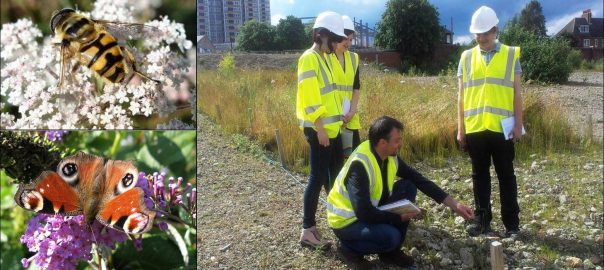







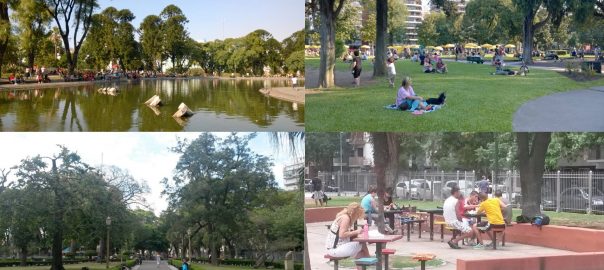
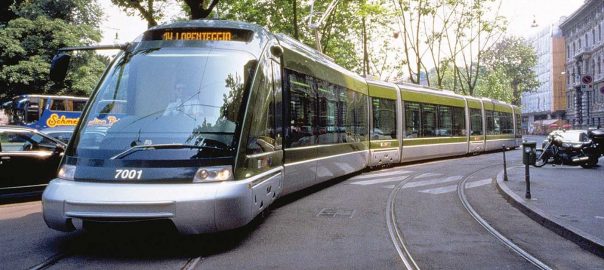
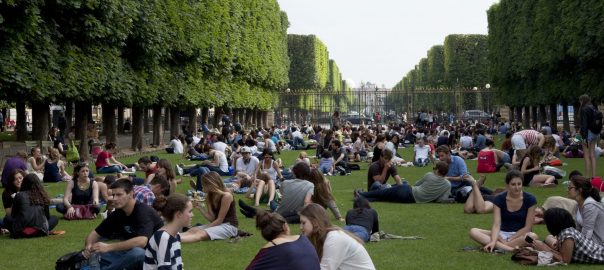
A belated comment that this seems to overlap with enhanced weathering of silicate minerals, which Prof David Beeling (Sheffield) is investigating.
I think he’s looking at using it on farmland so it complements what you’re doing – hopefully.
Thanks Mark, this is a very helpful article and one I have been very pleased to share with others. It helps make clear the brownfield opportunity is a very rich and important concept for any city, in the flux of change and opportunity for nature in the city, and this thinking can and should be part of coordinated urban planning.
best wishes
Richard Scott
National Wildflower Centre, UK
Thank you for your comment Stuart. Please do get in touch if you would like any further details. I would be very keen to hear of your attempts to create a carbon capture garden in your own work. Best wishes, Mark
I feel lucky to be in a profession where we regularly use the scientific materials & data developed from places around the world to help us in our work. My soil specifications and plant selections have expanded today in learning of your work. I can “profess” to know more reasons to guide the designs and community recommendations in my office.
Sincerely,